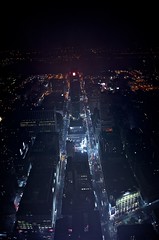Alan had to have an X-ray and CAT scan. We both needed to be examined by an anesthesiologist. Alan had to be seen by the doctor who would do his surgery. I had to see mine.
So on surgery minus one week--you can expect:
- an additional cross matching
- and X-ray and CAT scan
- a check-up by an anesthesiologist
- a check-up with the surgeon
Formerly, ribs had to be removed and the kidney was taken out from the donor's back. This left the donor in a lot of pain and often produced unsightly bulges in the muscles. Donors complained, so doctors began taking the kidney from the front. Still, ribs had to be removed.
Once laproscopic surgery became feasible, the kidney had generally been removed near the navel and no ribs were taken.
My doctor took it one step further. He would remove the kidney near the pubic bone. This would leave the scar hidden by bathing suits or underwear. I nice thought for a single, fifty-year-old!
It took us three months to complete everything. However, all the tests can be completed within three weeks. Most of the time and effort is spent before the surgery.












